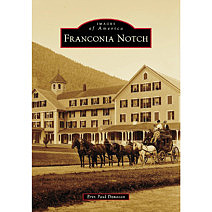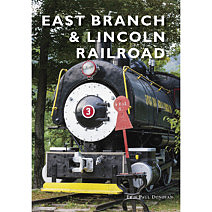Mount Chocorua, New Hampshire – When it comes to impressive mountains in New Hampshire, Mount Chocorua (3490 feet) in Albany is at the top of the list. One of the mountains on the 52 With a View hiking list, Mount Chocorua is the easternmost peak of the Sandwich Range. It is also part of the 6,100-acre Mount Chocorua Scenic Area, which was established in 1986. The legend of Chief Chocorua, which many believe the mountain is named for, is told often.
From my New Hampshire 52 With A View write-up, "Mount Chocorua is allegedly named for Chief Chocorua, a 1700s Native American chief. The legend of Chocorua varies, but the one repeated most often is that Chocorua befriended a settler named Cornelius Campbell in the early 1700s. And while under the care of the Campbells, Chocorua’s son accidentally drank poison and died. Chocorua swore revenge on the family, and when Cornelius’ wife and children were found dead, Campbell chased Chocorua up the mountain (Mount Chocorua). Realizing he was going to be killed, Chocorua climbed a boulder and jumped off the mountain. Before jumping to his death, he put a curse on the white man. However, Chief Chocorua may have been a fictitious character."
Other versions of the Chocorua legend exist; one is that settlers chased Chocorua to the top of the mountain and then burned (hence the bald summit cone) the top of the mountain. To avoid burning to death, Chocorua jumped to his death. In most versions of the legend, before jumping, he puts a curse (below) on the white man.
“A curse upon ye, white men! May the Great Spirit curse ye when he speaks in the clouds, and his words are fire! Chocorua had a son, and ye killed him while the sky looked bright! Lightning blast your crops! Winds and fire destroy your dwellings! The Evil Spirit breathe death upon your cattle! Your graves lie in the war-path of the Indian! Panthers howl and wolves fatten over your bones! Chocorua goes to the Great Spirit,—his curse stays with the white man!” (King, 1864)
After Chocorua jumped to his death, livestock in the town of Burton (today’s Albany) began dying of a disease called “Burton’s Ail.” Crops failed to grow, weather events caused destruction, and settlers became sick. With hopes of removing the curse from the town, the town’s name was even changed to Albany in 1833. This went on for many years, but it was discovered that high levels of calcium chloride (used to be called muriate of lime) in the water was making the livestock sick.
In 1825, Henry Wadsworth Longfellow (1807-1882) wrote a poem titled, “Jeckoyva* that was published in The United States Library Gazette. The poem is about a Native American chief who died on a mountain – Mount Chocorua – that is named for him. Longfellow’s poem is possibly one of the first publications that makes reference to a Native American chief named Chocorua.
In 1830, Lydia Maria Child (1802-1880) wrote a story, “Chocorua’s Curse,” which appeared in the book The Token: A Christmas and New Year’s Present. Included with Child's story is a steel engraving by George W. Hatch of Thomas Cole’s (1801-1848) painting: The Death of Chocorua (1828). Cole’s painting would be renamed Chocorua's Curse. Pictured above is the engraving as it appeared in Frederick Wilkinson Kilbourne’s, Chronicles of the White Mountains (1916).
One of the earliest references to Mount Chocorua can be found in Jeremy Belknap’s (1744-1798) Journal of A Tour to the White Mountains in July 1784, which was published by the Massachusetts Historical Society in 1876. Belknap makes reference to seeing “Corua and White-face mountains” on Thursday, July 22, 1784. Corua is a spelling variation of Chocorua.
Dating back to the early 18th century, spelling variations of Chocorua have appeared in publications and on maps. Thomas Jeffery’s 1755 map of New England shows a “Jackoyroays Hill,” which is likely Chocorua. "Corua" and “Coruway” were used during the 1700s. The name “Chocorua” appears on Jeremy Belknap’s 1791 map of New Hampshire. On Philip Carrigain’s 1816 map of New Hampshire, the mountain is labeled as “Corway-Peak Mt.” And referred to earlier in this write-up, Thomas Cole’s 1828 painting uses, “Chocorua.” While the spelling variations are confusing, this was common during the early years of the White Mountains.
Marjory Gane Harkness (1880-1974) notes in The Tamworth Narrative (1958) that a local resident, Jonathan Gilman, claimed that an early settler that he was friends with knew Chief Chocorua. Mosses Sweetser in his The White Mountains: A Handbook for Travellers (1882) mentions that a Tamworth resident told him personally about the legend of Chocorua. Other written accounts of the legend claim Chief Paugus of the Pequawket tribe was Chocorua’s father; Paugus was killed at the Battle of Pequawket (Lovewell's Fight) in Fryeburg, Maine in 1725. And some accounts claim Chocorua had a daughter, named Mineola. All these accounts suggest Chocorua was an early 1700s Native American, but there appears to be no supporting documentation.
While the legend of Chocorua is intriguing, extensive research done by Native American historian Mary Ellen Lepionka (1943-2024) found no mention of a Chief Chocorua in Abenaki history. If he existed, his life history is unknown. However, in Lepionka's excellent write-up, Chocorua Redux: Revisionist History of a Name, she makes an educated guess that the mountain was named for an animal, not for a Native American chief, and that Chocorua means “Home of the Water Serpent." Interestingly, water serpents were sacred to the Abenaki tribe and many other Native American tribes.
Mount Chocorua's bald summit, likely the result of fires during the 19th century, offers endless views in all directions. It is a great mountain for watching the sunrise or sunset and stargazing. From 1911-1926, Mount Chocorua was used as a fire lookout. This lookout consisted of only a table that an observer would put his map and alidade (in mapping, this instrument is used with a plane table for measuring the distance of an object) on.
A new fire tower, which replaced Chocorua’s lookout stand, was built on Middle Sister Mountain. The Middle Sister Groundhouse was in operation from 1927-1948; groundhouse fire towers are built on the ground, not on top of a tower. Pictured above are the remnants of said fire tower at sunset during the summer months. Mount Chocorua is in the background on the left. For a number of years, a Forest Service radio repeater was located inside the abandoned foundation of the groundhouse. However, since taking this photograph, the repeater has been moved out of the foundation.
While the views are excellent from the summit of Mount Chocorua, the miles of trails surrounding the mountain are rich with history. Two of the more traveled trails are Champney Falls Trail and Liberty Trail; both have interesting features along them. Named for the White Mountains artist Benjamin Champney (1817-1907), the Champney Falls Trail begins along the Kancamagus Scenic Byway and ends at the Piper Trail. Two waterfalls, Champney and Pitcher Falls, are along this route. The latter is a popular ice climbing spot.
Considered to be the most popular and easiest trail up Mount Chocorua, the Liberty Trail begins on Paugus Mill Road and ends on Mount Chocorua's bald summit. Originally an old bridle path, the Liberty Trail passes by the Jim Liberty Cabin. Built in 1934 and renovated in 1974, the Forest Service repaired the cabin in the 2020s. The cabin standing today replaced a previous cabin on the site; that cabin was built in 1924 and destroyed in 1932. Both the trail and cabin are named for the French-Canadian Jim (Dutch) Liberty. The Jim Liberty Cabin is the site of the now gone Chocorua Peak House.
From my Jim Liberty Cabin, Mount Chocorua write-up, “The Jim Liberty Cabin occupies the site of the Chocorua Peak House. The first Peak House was built by Jim (Dutch) Liberty. Consisting of stone walls and a canvas roof, it was a simple structure. However, strong winds destroyed the canvas roof, so Liberty put tents inside the stone walls. David Knowles and Newell Forrest acquired the Peak House site in 1892. They replaced the original Peak House that Jim (Dutch) Liberty built with a three-story Peak House. It opened to the public in 1892.” On September 26, 1915, the Peak House was destroyed during a massive storm. It was not rebuilt.
Mount Chocorua’s bald summit can be seen from many vantage points. Seen above is Chocorua during the autumn foliage season from the Boulder Loop Trail; this trail is located off of the Kancamagus Highway (Route 112). The forest seen here was logged during the Swift River Railroad era (1906-1916).
19th-century painters, such as Benjamin Champney, Thomas Cole, and William Trost Richards, created impressive paintings of this magnificent mountain. Naturalist and writer Frank Bolles (1856-1894) spent an excessive amount of time exploring the mountain; he even spent a night on the summit. The legend of Chocorua is likely part of the reason why these early explorers were so drawn to the mountain.
Regardless if Chocorua is a fictitious Native American chief, made up by settlers and / or early writers, the legend of Chocorua will continue to be told for centuries to come.
More reading:
Jim Liberty Cabin
The Swift River Railroad
52 With A View, Cherry Mountain
Happy image making..
© Erin Paul Donovan. All rights reserved | Mount Chocorua Prints
Here to steal content (example: for use in a guidebook), see our Copyright Notice.
Bibliography:
Belknap, Jeremy. Journal of A Tour to the White Mountains in July, 1784. Massachusetts Historical Society: Boston, MA, 1876.
Donovan, Erin Paul. “52 With A View, New Hampshire.” ScenicNH Photography LLC, 17 Aug 2014, https://www.scenicnh.com/new-hampshire-52-with-a-view/.
Donovan, Erin Paul. “Jim Liberty Cabin, Mount Chocorua.” ScenicNH Photography LLC, 08 Feb 2025, https://www.scenicnh.com/blog/2025/02/jim-liberty-cabin-mount-chocorua/.
Child, Lydia Maria. “Chocorua’s Curse.” The Token: A Christmas and New Year’s Present, Boston, MA: Carter and Hendee, 1830, p. 257-265.
Chocorua Lake Conservancy. “History of the Hiking Trails on Mount Chocorua.” Chocorua Lake Conservancy, 1 Mar 2019, https://www.chocorualake.org/news/mount-chocorua-trail-history.
Harkness, Marjory Gane. The Tamworth Narrative (New Hampshire). Freeport, ME: The Bond Wheelwright Company, 1958.
Kilbourne, Frederick Wilkinson. Chronicles of the White Mountains. Boston, MA: Houghton Mifflin Company, 1916.
King, Thomas Starr. The White Hills; Their Legends, Landscape, and Poetry. Boston, MA: Crosby and Nichols Company, 1864.
Lepionka, Mary Ellen. "Chocorua Redux: Revisionist History of a Name.”Chocorua Lake Conservancy, 1 Mar 2019, https://www.chocorualake.org/news/chocorua-redux-revisionist-history-of-a-name?rq=redux.
Longfellow, Henry Wadsworth. “Jeckoyva.” The United States Library Gazette, Vol. II, No. 9. Boston, MA: Cummings, Hilliard, and Company, August 1, 1825, p. 348.
Sweetser, Moses Foster. The White Mountains: A Handbook for Travellers, Fourth Edition. Boston, MA: James R. Osgood and Company, 1882.
Owner of ScenicNH Photography LLC
Erin Paul is a professional photographer, writer, and author who specializes in environmental conservation and historic preservation photography mainly in the New Hampshire White Mountains. His work is published worldwide, and publication credits include: Appalachian Mountain Club, Appalachian Trail Conservancy, Backpacker Magazine, and The Wilderness Society. He has written two photo history books about the White Mountains: the East Branch & Lincoln Railroad (2018) and Franconia Notch (2024).












ScenicNH Photography LLC
Specializing in environmental conservation and historic preservation photography mainly in the White Mountains region of New Hampshire, Erin Paul’s photography and writing focuses on the history of the White Mountains, and telling the story of abandoned places and forgotten historical sites.